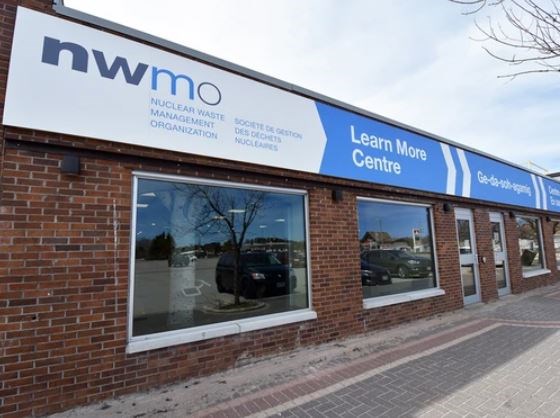IGNACE – The Nuclear Waste Management Organization has often stated willingness is the key to ensuring the Deep Geological Repository is a success. However, there are many outside the Wabigoon Lake First Nation – Ignace area who feel that the decision to house Canada’s nuclear waste shouldn’t be left up to the two communities alone.
To meet the demand for more consultation, NWMO has decided that their 2023 site selection plans need to be pushed back to 2024.
“Since 2010, the Nuclear Waste Management Organization has been engaged in a process to identify a site for a deep geological repository. Site selection is a critical milestone, marking the beginning of a new series of activities including the regulatory decision-making process,” said Vince Ponka, Regional Communication Manager, NWMO. “With a project of such complexity and generational scope, we have always anticipated that we will need to adapt over the course of the process, while also keeping an eye on the long view.”
One of the ways NWMO is adapting is they feel there needs to be more community engagement before they can fulling commit to the Revell Lake site.
“We experienced a significant loss of time for face-to-face engagement and interaction, especially in communities exploring their potential to host the project,” said Lise Morton, Vice-President of Site Selection at the NWMO. “Making this small adjustment in timing also gives us and the potential host communities additional time to review and absorb new information as they consider if hosting the project aligns with their vision and priorities.”
According to Ponka, COVID-19 was the catalyst for this decision.
“Like all organizations and businesses, several provincial lockdowns associated with the global COVID-19 pandemic impacted our work. In reviewing our rolling five-year implementation plan and considering the impacts of the pandemic, we have made the decision to shift the timing for site selection. We now anticipate we will identify a preferred site by fall 2024,” said Ponka.
Moreover, the later date won’t affect the timeline of the DRG project. NWMO still expects to begin building the DRG in 2033 and have the operation running at full capacity by the 2040s.
The DGR project has had a lot of momentum in 2022. Highlights of the year to date include:
- In collaboration with the potential siting area communities, we recently began rolling out findings from a series of community studies. The findings cover a wide range of topics, including employment and workforce growth, opportunities for businesses, infrastructure improvements and the construction of a Centre of Expertise that will attract world-class academics from around the globe.
- In June, we published the Confidence in Safety reports for each potential site. These reports reflect years of research and fieldwork. They provide detailed results that show why we are confident that both sitting areas where communities are considering hosting the project can meet its rigorous safety requirements.
- In May, we successfully completed a full-scale demonstration of the engineered barriers that will safely contain and isolate Canada’s used nuclear fuel in the repository.
- Earlier this year we released our revised transportation planning framework and preliminary transportation plan, which are designed to advance conversations and provide more details on how we plan to safely transport used nuclear fuel.
